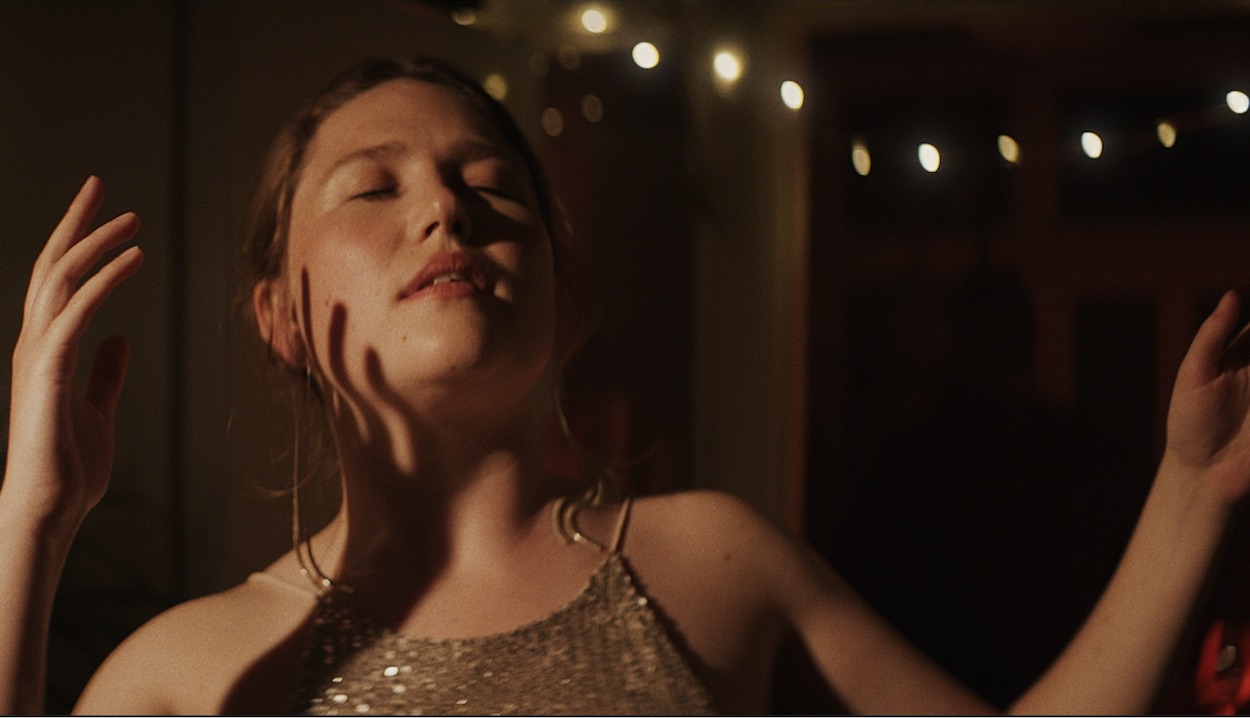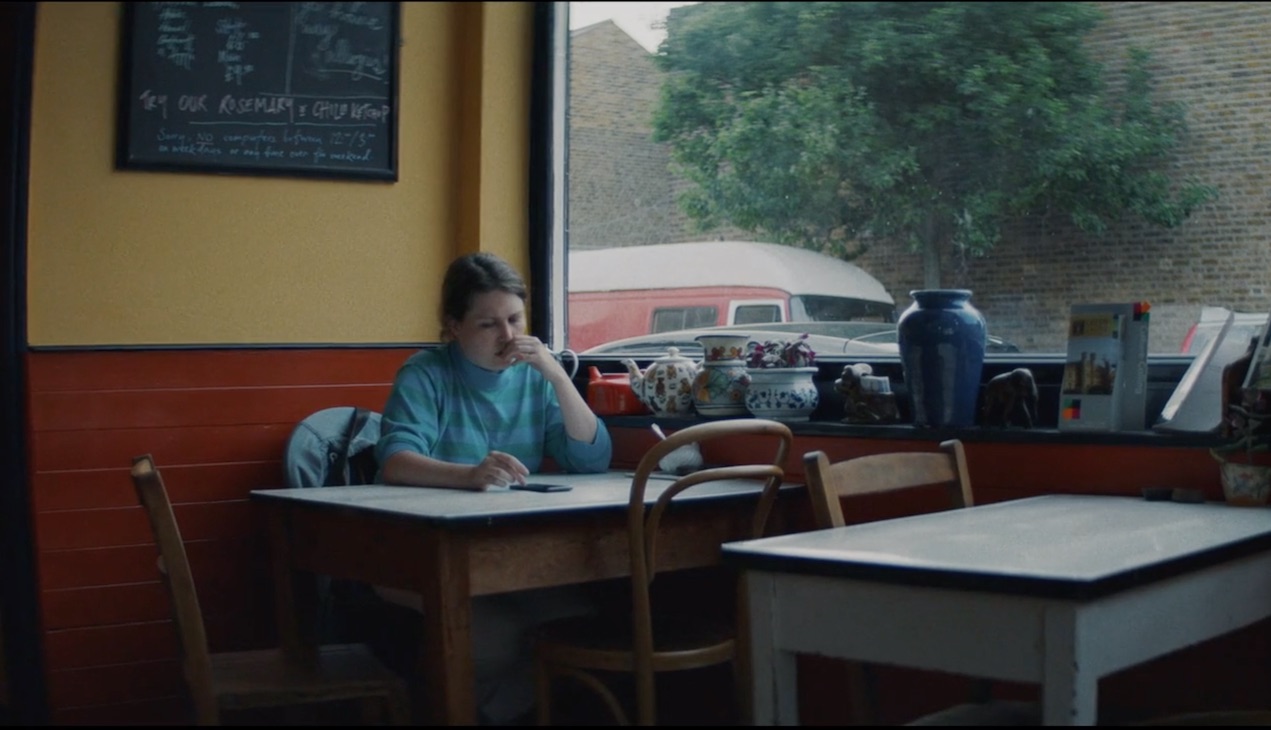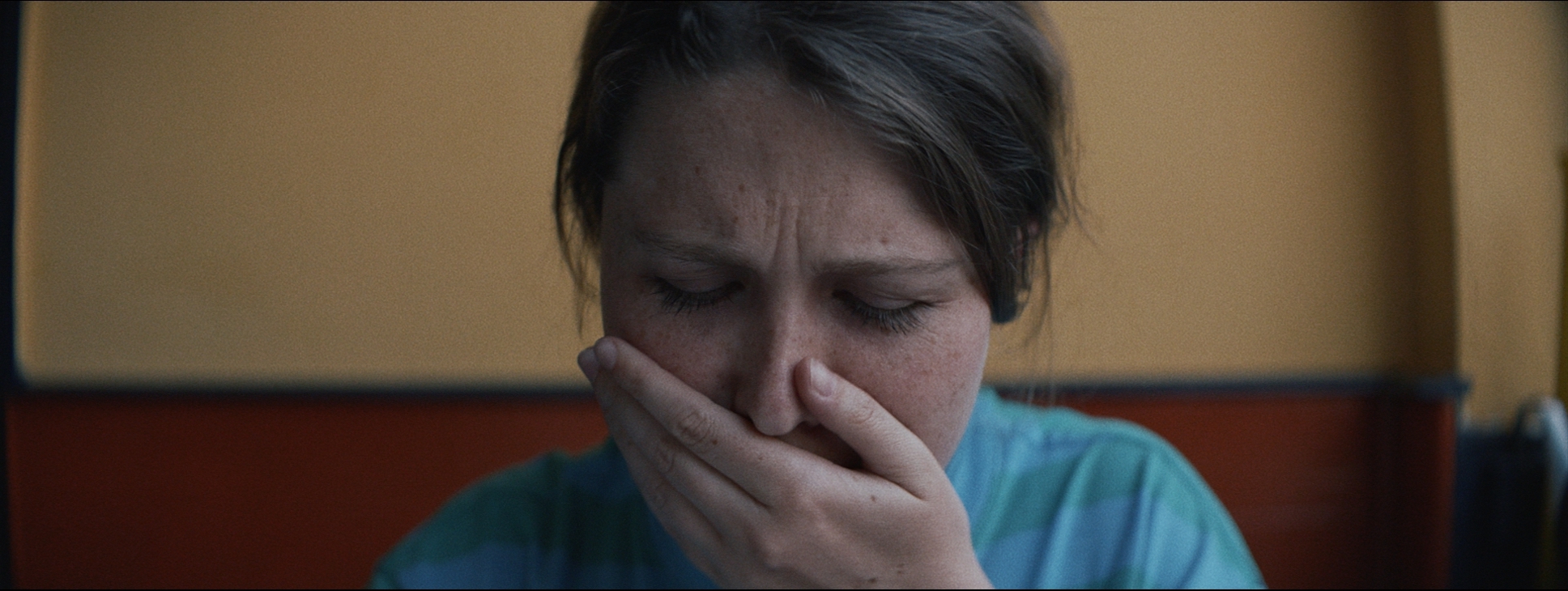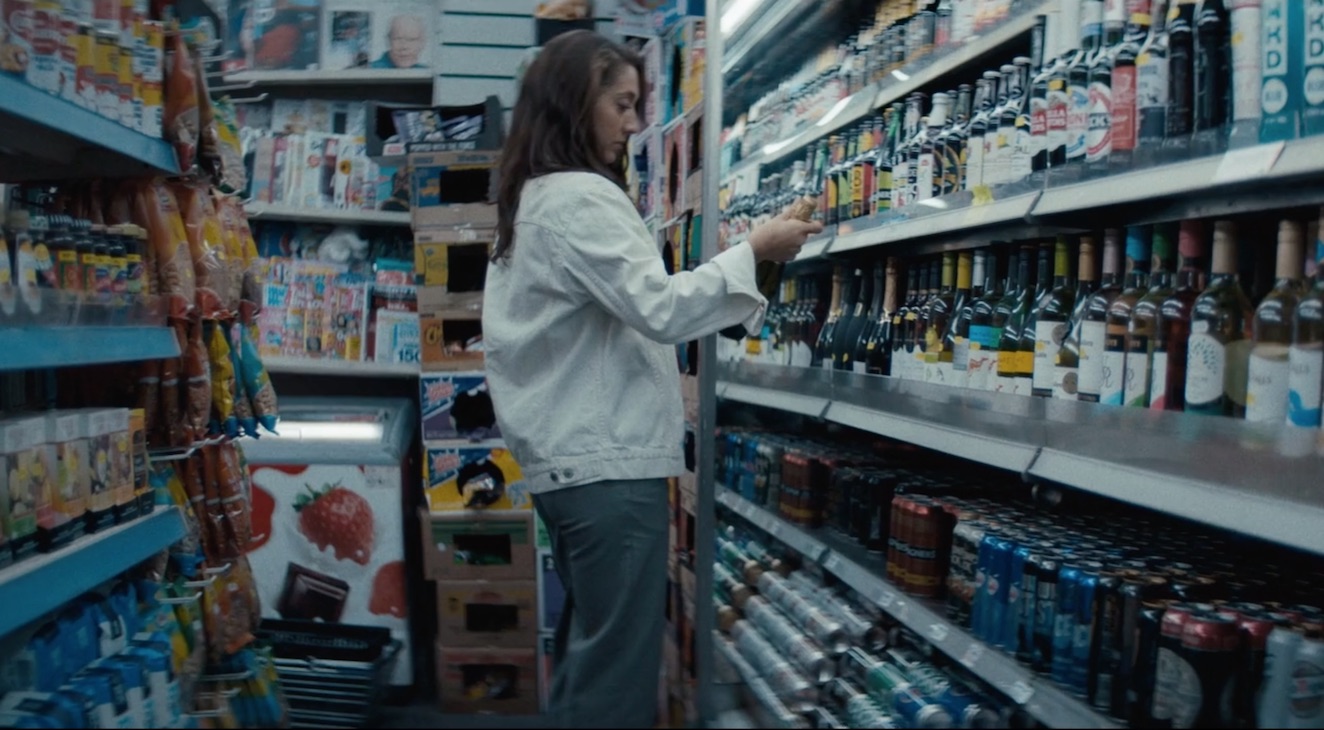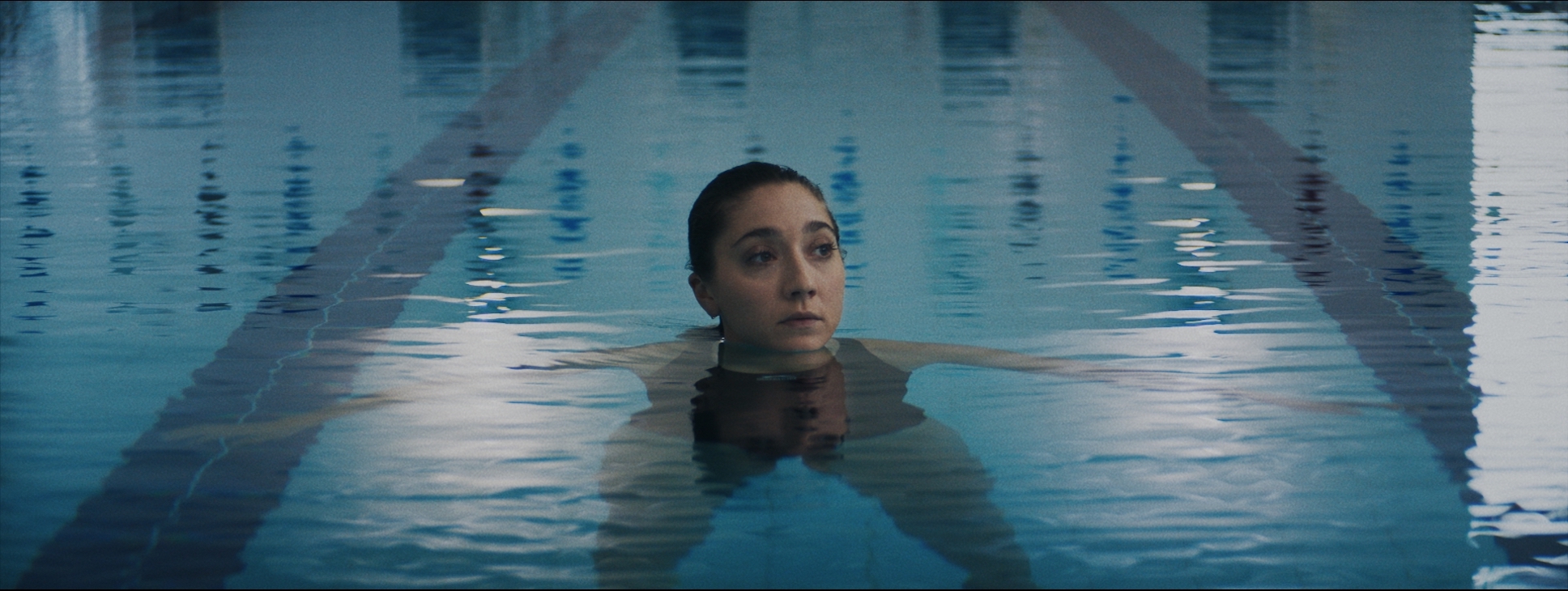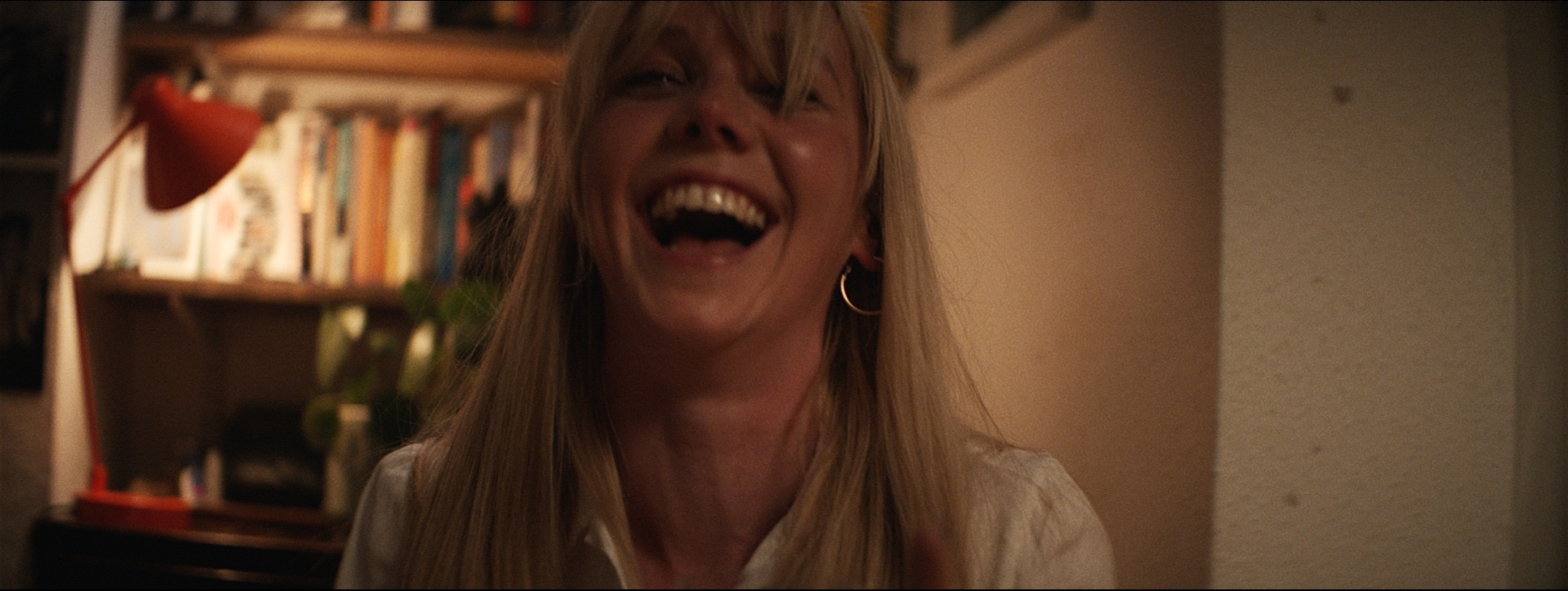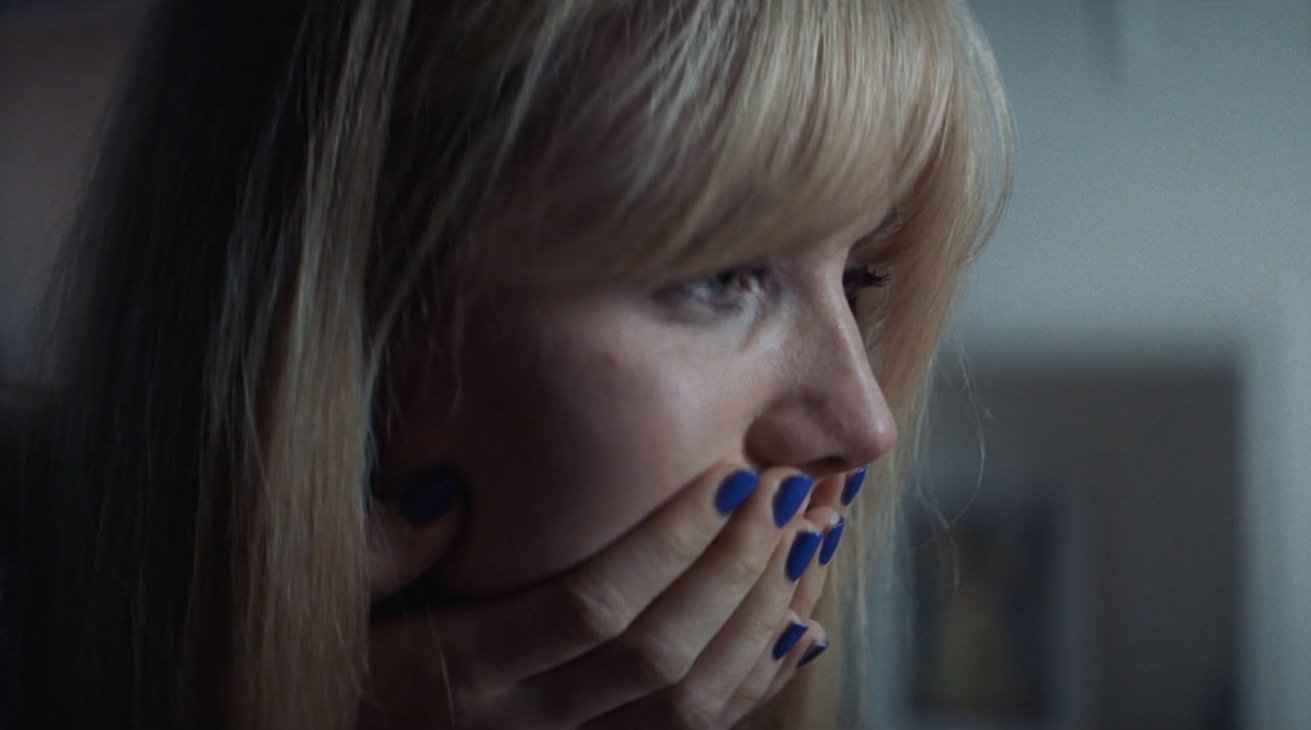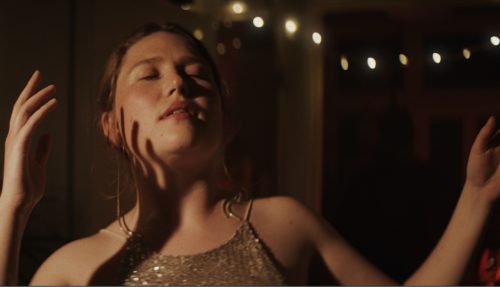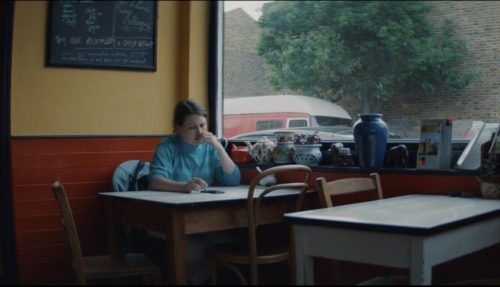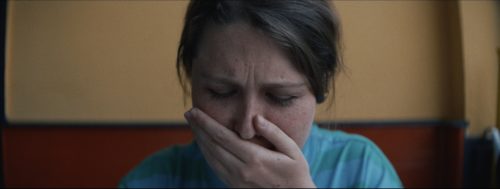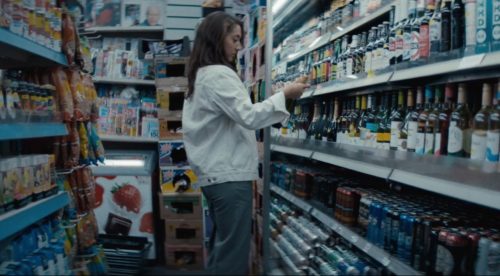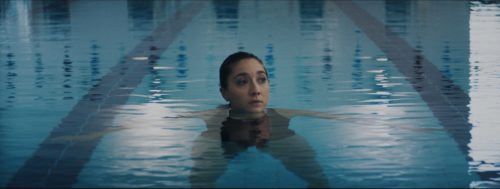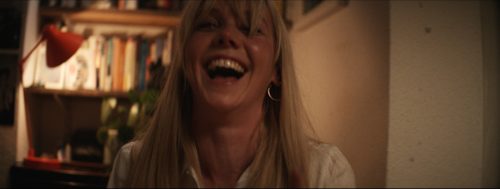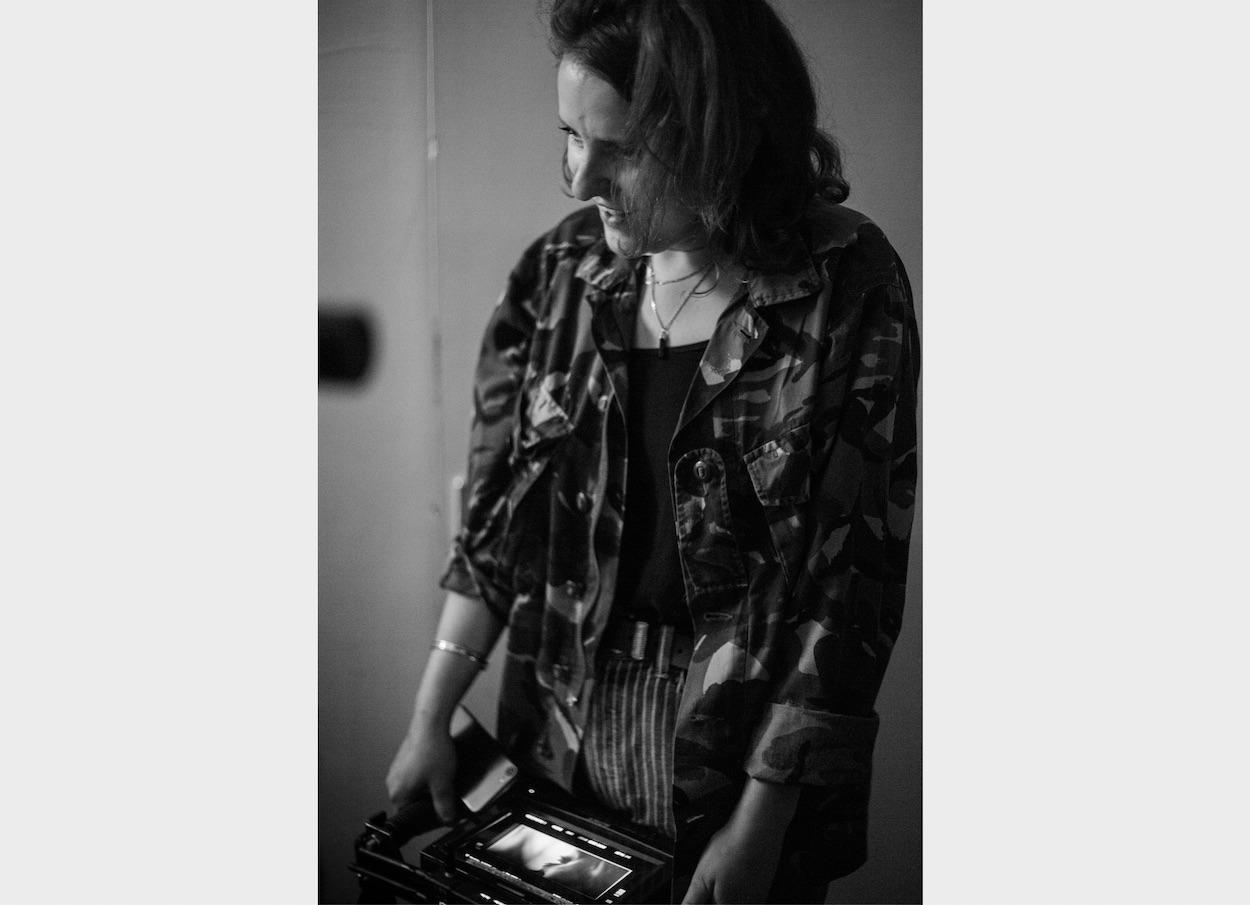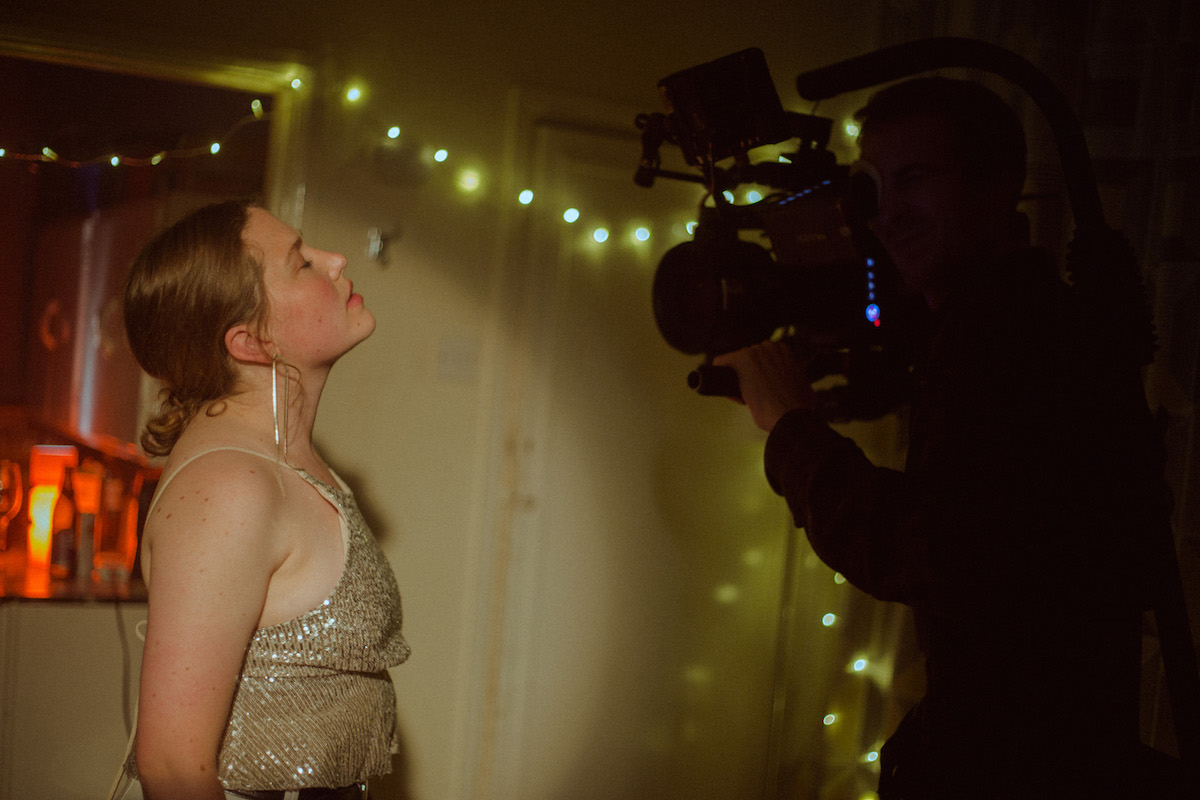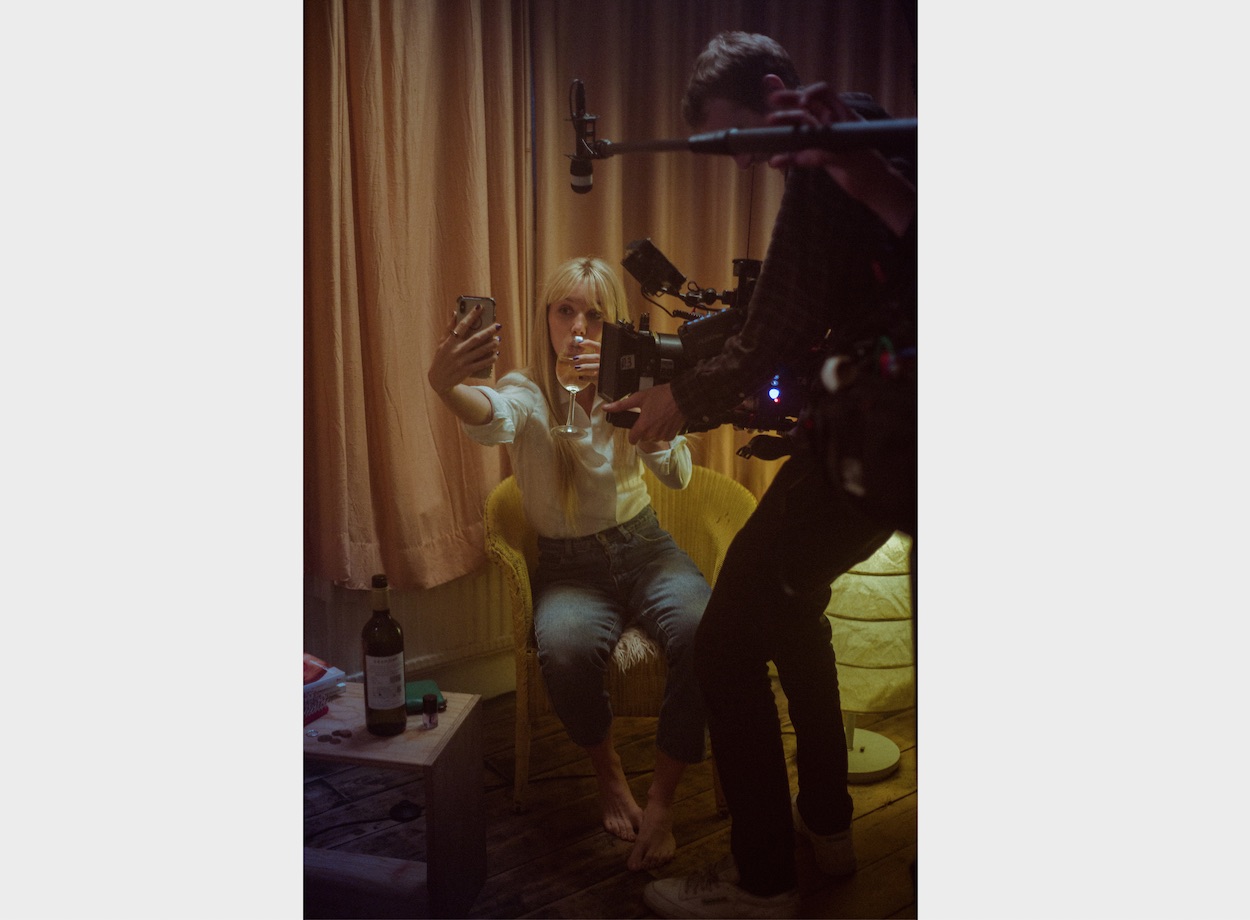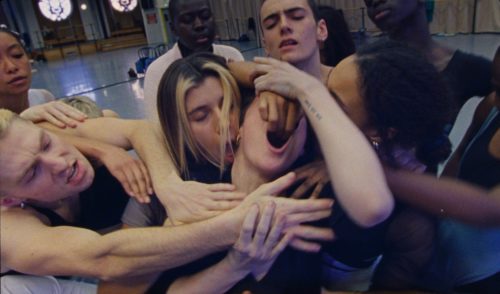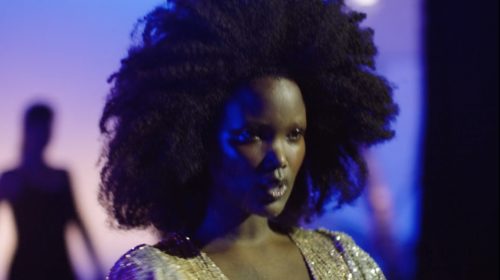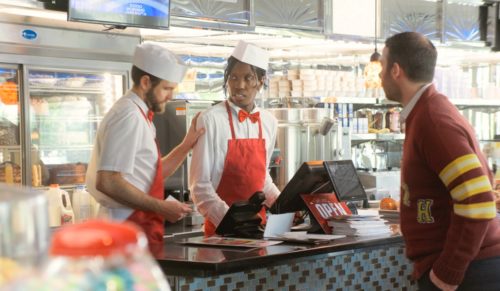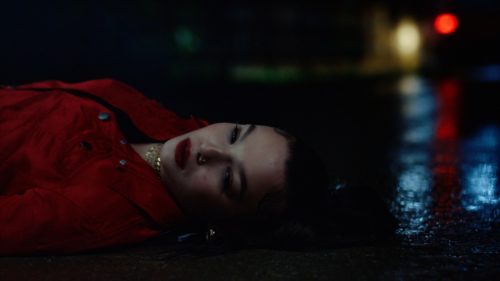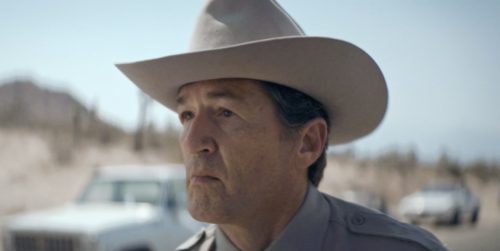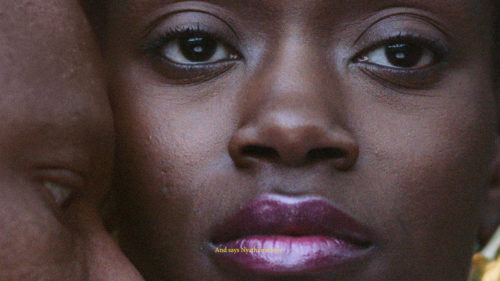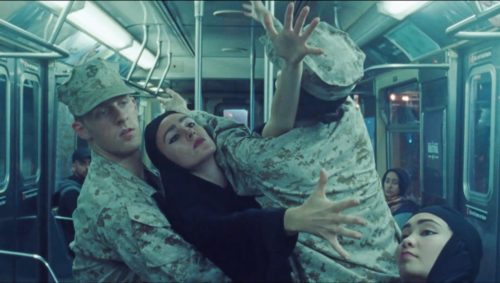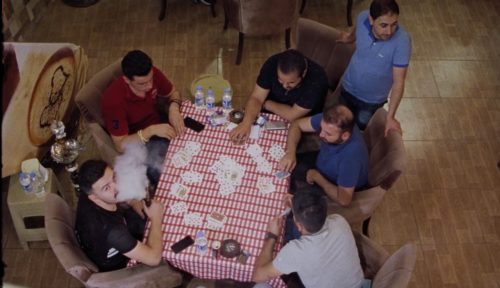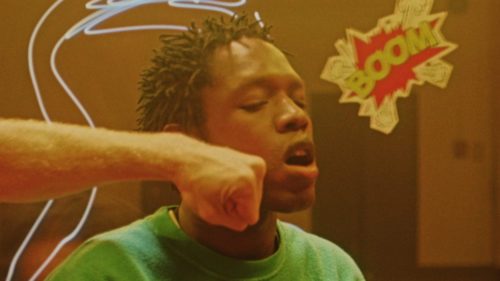What triggered your desire to write this film? And what was your process for developing the narrative – did you sketch or write – and did you piece your ideas together with a storyboard?
GIRLS WHO DRINK draws heavily from my own personal experiences with drinking. There is a lot of alcoholism in my family, and so from the very first time I drank as a teenager, I was always acutely aware of the potential for alcohol to be destructive. But growing up and existing in a culture that normalises heavy drinking, it was often confusing and frustrating to experience the way that we dismiss or laugh away problematic behaviour around drinking.
It’s so incredibly normal to get drunk – but when you look closely, the reality can be really disturbing. People assume that to be an alcoholic, you have to be drinking round the clock, but actually it doesn’t really matter how much you drink or when you do it for it to be a problem. I wanted to tell a story about this grey area of alcoholism – focusing on people who outwardly seem to be functioning, but who are actually really struggling. I wanted to inspect the way people really feel when they downplay something that has deeply worried them. And I wanted to focus specifically on women because I hadn’t seen a portrayal of female alcoholism that I could relate to.
What form did your research take in developing the visual narrative? And what were the key ideas you wanted to convey?
I suppose a lot of the research came from my own experiences, both with drinking and the culture around it. It was important for there to be no judgement, as so often we judge the consequences of drinking before looking at the reasons why. Rarely is it as simple as just drinking a bit less – it’s not always about not knowing when to stop, but not being able to.
I also wanted to deconstruct stereotypes around alcoholism. These women clearly have lives, friends, jobs – but you can have all these things and still have a problem. I wanted to do this all with avoiding cliches, particularly around the hangover. If you give up alcohol, people often find it hard to understand why – when ostensibly you are functioning. The shame, regret and anxiety of the hangover are the part than no one can see – so this is something that was crucial. Importantly too, they are women – and while we historically romanticize a lot of male alcoholics, rarely do we hear about the women in a non judgemental way.
You delve deeply into the psyche of your characters with close-ups of their inner feelings. It’s subtle and highly effective acting, or rather non-acting as it feels so authentic. How did you go about finding your cast and what were you looking for in your actors?
I worked very closely with the casting director, Georgia Fleury Reynolds on the casting for this. For both of us, it was crucial that the actors understood the nuanced portrayal of alcoholism that I was aiming for. They all understood that it was the feelings before and after that we were looking for – the loneliness, discomfort in your own skin and the dreadful self loathing that comes with it the next day. I think it’s really hard to play drunk well, but all three actors did with incredible subtlety. It’s about the pain of trying to escape yourself by drinking to block it all out, rather than getting too excited and having a few too many. We were looking for people who understood how to convey that pain. Which I think they all did exceptionally well!
How did you go about directing the girls to get such intimate portrayals of their internal struggles? For instance, the mix of shame, memories and a desire to redeem themselves in the hangover scenes is very powerful.
I was really open about the inspiration and my personal experiences ahead of the shoot, which I hope helped! I wrote something for them to read before to help them understand the characters – emphasising that it was about a fundamental desire to try and become someone else via drinking – but then hating the person you become, and how painful that is. I think it was less that they want to redeem themselves and more the inevitability of knowing that you are probably going to do the same thing again. We did quite a lot of improvisation too, so they were able to make the experience their own.
The performances are so realistic and although you don’t dwell on stereotypical drunken behaviour did they have a few drinks to get into that space?
It was really important to me that the behaviour specifically didn’t feel like stereotypical drunken behaviour. It’s easy to look at someone falling over, passing out, being sick – and say, well that doesn’t look like me – but those full body cringe flashbacks when you remember something dreadful you said? I think everyone can relate to that. There was no alcohol on set – just a lot of tonic water masquerading as prosecco. I think part of what makes it so convincing is how it is all drawn from real experiences. For example with Kate’s dialogue at the party, I asked people what the most cringy things they’d heard people say at parties were, and I used their real answers as conversation starters for her. Shooting that part was actually really hilarious, because it was so relatable.
The viewer becomes immersed in the girls’ experiences through clever editing, sound design and the music track. Did you collaborate early on in the making of the film with an editor and sound designer?
The film really started to take shape once I found the track that we ended up using: ‘Happiness’ by Molly Drake. For me it kind of sounded like heartbreak, and when you are sort of beginning to realise that you have a problem, it is heartbreaking. The song is about happiness being just out of your grasp, and the same is true of the women in the film; who are realising that happiness does not exist in the bottom of their glass.
In terms of the edit, a big influence was Jean Marc Vallee’s editing of Sharp Objects, and the way flash cutting was used to trigger memories – because if you black out when you are drinking, sometimes it is only just a flash that you remember. The sound design, by Guy Chase, was very important in creating the chaos that the girls are trapped in, and establishing the distinct difference between letting go and losing control. The idea was for it to be as realistic as possible to immerse you in their lives – where possible we used sound from shoot or from an actual house party, and a cafe in Boq on a Sunday morning, rather than library sounds. Guy and I recorded the drinking ourselves (although we were glugging water, not wine), to make it sound as if it were in your own head.
Why do you think obsessive drinking is so often a solution for filling the void of isolation or anxiety when intellectually most know that alcohol exacerbates the situation?
I think drinking is deeply ingrained into our society. We drink to remember, to forget, to celebrate, to commiserate – we drink at practically any opportunity. Drinking is so commonplace that I actually don’t think people really know the full extent to which it exacerbates feelings of anxiety or loneliness, or if they do; they choose to ignore it – in the same way that you might choose to ignore how many units you are drinking in relation to the weekly recommendation.
As well as this, not drinking is often unnecessarily perceived as a boring punishment, which socially people want to avoid. If we could collectively reframe our attitude to drinking slightly, I think people might be more open to the idea that it’s a lot more boring to spend every Saturday desperately hungover and cringing, than it is to not be hungover and have the possibility to do whatever you want. But it’s very easy to get stuck in a vicious cycle – sometimes you think the hair of the dog is the only way to calm those feelings down.
What are you currently working on?
I’m currently developing GIRLS WHO DRINK into a feature length project, as well as writing a new short. I am also excited to have joined the roster at Agile Films!
Links:
| Director | Lily Rose Thomas |
| Producer | Sarah Gardner |
| Executive Producer | Jamie Clark |
| Cast | Lauren Lyle |
| Kate Handford | |
| Sarah Vevers | |
| Director of Photography | Harry Wheeler |
| Production Designer | Alicia Howitt |
| Editor | Louise Robinson, Jamie O'Donnell |
| Casting Director | Georgia Fleury Reynolds |
| Costume Designer | Astrid Dalton |
| Hair and Make Up Designer | Gaby Winwood |
| 1st Assistant Director | Oliver Waters |
| 1st Assistant Camera | Michael Hobdell |
| 2nd Assistant Camera | Will Gardner |
| Gaffer | Joe Norwell |
| Electrician | Ross Brown |
| Sound Recordist | Ollie Drummond |
| Runners | Danny Cause |
| Johny Chhetri | |
| Hair and Make Up Trainee | Holly Gallienne Schmidt |
| Colourist | Tim Smith |
| Sound Design | Guy Chase |
| Titles | Nataliya Vitorovich |
| Stills Photographer | Sofia Boriosi |
| Music | “Happiness” Written and Performed by Molly Drake Courtesy of Bryter Music and Published by Domino Publishing Co Ltd (PRS) |
| Special Thanks | Alex Baddeley |
| Alleyn's School | |
| Ben Mace (Pro Light London) | |
| Blue Brick Cafe | |
| Imogen Harrison | |
| Lynden Campbell | |
| Maggie McDermott (Cut and Run) | |
| Nikola Vasokova | |
| Peter Tarran (Take 2 Films) | |
| Rocky News | |
| Ryan Delahunty (Pro Light London) | |
| Stephen Isaac-Wilson | |
| Tom Ivin | |
| Tom McMahon |
